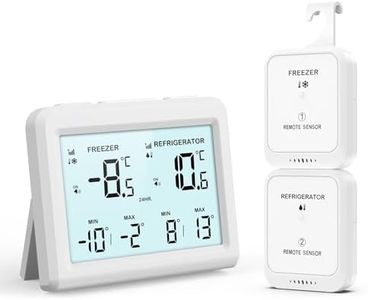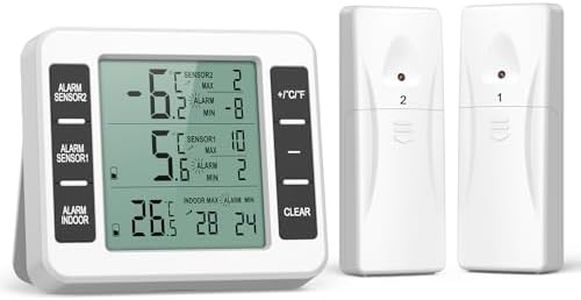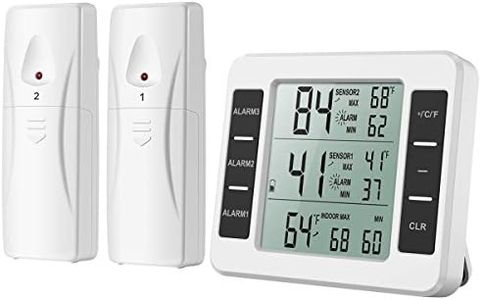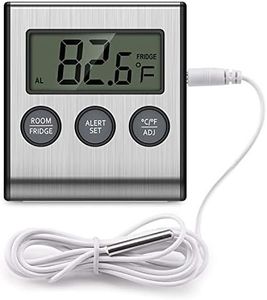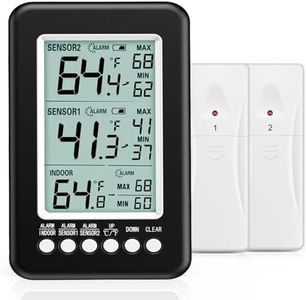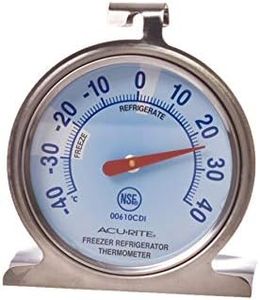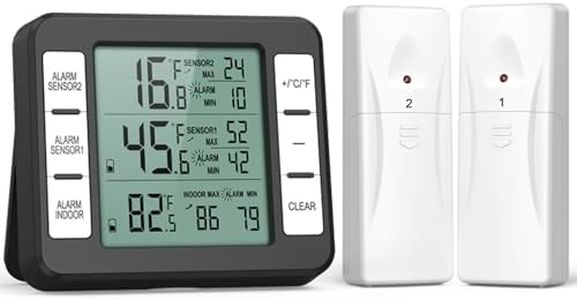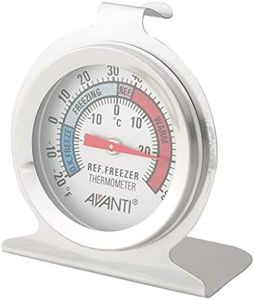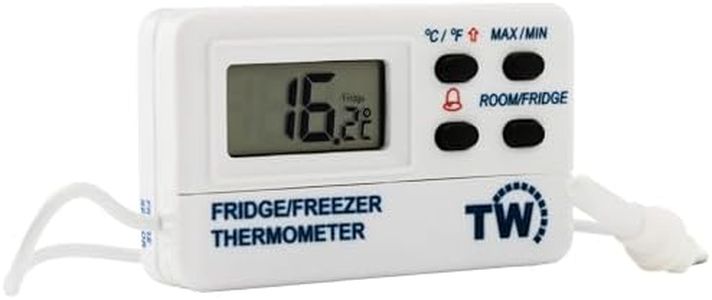We Use CookiesWe use cookies to enhance the security, performance,
functionality and for analytical and promotional activities. By continuing to browse this site you
are agreeing to our privacy policy
10 Best Refrigerator Thermometers
From leading brands and best sellers available on the web.Buying Guide for the Best Refrigerator Thermometers
Choosing the right refrigerator thermometer can make a big difference in keeping your food safe and fresh. A thermometer helps you monitor the actual temperature inside your fridge or freezer, ensuring it consistently stays within recommended levels for food safety. When shopping, look for a thermometer that is easy to read, accurate, and built to handle the cold and moisture inside a refrigerator. Always consider your personal habits, like how often you check your fridge or whether you need readings for both the fridge and freezer. Focus on useful features rather than unnecessary extras to find the best fit for your needs.AccuracyAccuracy refers to how close the thermometer's reading is to the actual temperature inside your refrigerator. This is crucial because even a small inaccuracy can mean your food is being stored at unsafe temperatures, which can lead to spoilage or foodborne illness. Thermometers are usually rated for accuracy within a degree or half-degree range. For most users, a thermometer that is accurate within plus or minus one degree Fahrenheit is sufficient. If you need precision monitoring, perhaps for medications or sensitive ingredients, look for those with higher accuracy. Always check product specifications or reviews for accuracy ratings.
Display TypeDisplay type describes how you read the temperature on the thermometer. You'll find analog (dial) displays and digital displays. Analog types are simple, do not require batteries, and are easy to read for quick glances. Digital displays are usually larger, may offer more features like memory for high and low temperatures, but require batteries. If you prefer a straightforward, no-fuss approach, analog is typically enough. If tracking changes and easy readability are your priorities, consider a digital model.
Measurement RangeMeasurement range tells you the lowest and highest temperatures the thermometer can accurately measure. This is important as both refrigerators and freezers operate at different temperature zones. Most fridges should be kept between 35°F and 38°F, while freezers should be at 0°F or below. Choose a thermometer that covers the full spectrum you need; some are best for only refrigerators, others can handle both fridges and freezers. Consider what you want to measure and pick accordingly.
Durability and Build MaterialDurability and build material refer to how well the thermometer withstands the cold, moisture, and frequent handling present in a refrigerator. Look for thermometers made from stainless steel or high-quality plastic, as these resist rust and cracks. A durable thermometer will last longer and continue to give accurate readings even with daily use. If you tend to rearrange fridge items often or have a busy household, durability becomes more important.
Mounting OptionsMounting options describe how the thermometer stays in place inside your refrigerator. Common choices are standing (with a base), hanging (via a hook), or with a magnetic back. A stand allows you to place it on any flat shelf. A hook lets you hang it from a rack or wire shelf. Magnets can stick to the fridge walls. Choose the mounting method that works best with your fridge setup and also ensures the thermometer sits where you can easily see it.
Ease of ReadingEase of reading is about how quickly and clearly you can see the temperature. Larger numbers, high-contrast displays, and clear markings make it easier to check the reading at a glance, which is handy for busy kitchens or older adults. If you have trouble with small print, or your fridge is at an awkward height, prioritize thermometers with clear, bold displays.
Calibration FeatureCalibration feature means the thermometer can be adjusted to ensure it stays accurate over time. This is helpful if you want to periodically check and correct the thermometer, especially as some devices can lose precision. Not all models can be calibrated. If you value the ability to ensure ongoing accuracy, or if you’ll use the thermometer for a long time, consider models with a calibration option.
